Head of Financial Stability Department
Address to the CITI Residential Housing Conference, Sydney
Sydney - 15 May 2014
We shape our buildings, and afterwards our buildings shape us.
– Winston Churchill, speech to the House of Commons, 28 October 1943
Thanks very much for having me back. Last year I talked a lot about the structural changes that have happened in our financial system and the implications they had for housing prices and household debt and all the other aggregate things that we look at. I also talked a little bit about cyclical behaviour in the market.
It sometimes seems like most conversations about financial stability devolve into a discussion about housing. The Reserve Bank has for a long time put considerable energy into analysing developments in the household and housing sectors, and the risks they might pose. It seems that in recent years, some other central banks have increased the scope of their analysis and are now putting similar emphasis on these areas as we have done (Graph 1). There are at least three reasons for this collective shift: one reasonable, and two that in my view are less so.
Graph 1
In some senses, housing has genuinely become more important to central banks. Housing prices and housing-related debt have increased relative to the rest of the economy (Graph 2). Housing-related lending is a large fraction of bank lending. And in some countries, lending
standards remain quite easy compared with practices in Australia. So there could be some near-term risks in some places
Graph 2
The US housing bust sparked the last crisis, and most people don't realise that households defaulting on mortgages isn't usually the trigger for a bust or financial crisis.
The macroprudential tools that policymakers around the world have been designing seem to be easier to design to lean against borrowing for housing than against the other sources of risk we might care about.
An enduring theme in financial stability analysis is that it is not enough to look at averages and aggregates. Even though our concern is the stability of the system as a whole, we must drill down to the details to find where the risks might lie. So today, I'd like to take a step back and reflect on one important detail about property markets – that they are physical structures. We can't forget that this is a market for residential buildings. They are bought and sold, inherited and passed down, renovated or neglected and – occasionally – knocked down to make way for something new. And all through that life cycle, they are fixed in place on a given piece of land, which itself has location value.
If buildings are fixed in place, their arrangements in space will change only slowly. So we come to the observation I made at this conference last year, that Australia's cities are unusually low-density (Graph 3). Only New Zealand comes close. This low density is all the more remarkable given that many of the cities in both countries are geographically constrained. They cannot expand in all directions: oceans, mountains and national parks block some sides. As we will see, both the low density and the geographic constraints matter for the dynamics of this market, and thus they could matter for financial stability.
Graph 3
On top of these geographical attributes, powerful economic forces shape the development of cities, and the spatial patterns within them. Perhaps the most important is distance. Travel has costs and takes time. The car reduced those costs and times, and enabled 20th century suburbanisation. But it did not completely overcome the tyranny of distance within cities, and, in many cases, it replaced it with the tyranny of traffic congestion. So an old 19th century model of land use is a good starting point for thinking about space within cities even today (Mills 1967).[1] That model starts with the idea of a central place – a market or business district. Higher-value activity congregates close to the centre. Land prices and rents are lower, the further from the centre you go (Figure 1).
Figure 1
More recent models allow for more complex usage patterns (Lucas and Rossi-Hanberg 2002). There can be sub-centres further out, and ‘edge cities’ that attract activity to the lower-cost fringes (Garreau 1992).[2] There certainly are sub-centres within Australian cities. Some of them started out as separate towns that joined up with the expanding capitals. But if we look at the spatial pattern of employment in major Australian cities, the single-centre model is not a bad fit. The 2011 Census recorded the addresses of people's workplaces as well as their homes, so we can build maps of job density in different places. Graph 4 shows job density for the four largest Australian cities, disaggregated by local government area. At the level of the local government area, at least, jobs are concentrated in the central business districts and the areas immediately surrounding them. Notice that the scales here are exponential: these are big differences in density.
Graph 4
The pattern of residence is similar, though not quite as pronounced. Population density is higher near the centres and declines rapidly: again, the scales on these graphs are exponential, so each darker shade is an order of magnitude higher density. Some of the outermost districts still contain agricultural land and a good fraction of national parks, so it isn't surprising that population densities are low in these places. I find it interesting that even some middle-ring districts are not that much denser (Graph 5).
Graph 5
Part of the reason for the higher population density closer to the centre is historical. The inner parts of cities are older, built when we had to live more compactly. As incomes rose, people wanted bigger, nicer homes. As cars became more common, the cost of locating further out declined, and it became feasible to have those bigger homes. So newer homes further out tended to be bigger and sit on bigger blocks of land. Some of the older homes get renovated to be consistent with our higher modern incomes and aspirations. But we don't see much expansion of block sizes in the inner areas. The land parcels stay small. Sure, it would be a legal hassle to consolidate land titles like that, but people generally don't even try. That is because they are trading off space against price and distance. It is exactly the trade-off that drives that old central-place model. And as you can see, the bigger the city, the denser the inner ring is relative to the outer ring (Graph 6). In regional centres, that trade-off of space for place has not been so stark, and the overall density is generally between the middle and outer-ring densities in the larger cities.
Graph 6
As cities expand, the existing outer areas stop being fringe and become desirable locations relatively closer than the new fringe. The same property will cost a lot more, the closer it is to the action.
The power of the central place is even more striking if we directly contrast where the jobs are with where the employed people live. The next few maps show the ratio of jobs in an area to employed people living there (Graph 7). Places with ratios well above 1 are employment centres, attracting commuters from elsewhere in the city, or even from outside its limits. Places with ratios well below 1 are the commuter districts, the dormitory suburbs. As you can see, there are factory districts away from the CBD, especially in Melbourne, and office parks on the way out to Macquarie University in Sydney. But in all of these cities, the CBD is still the job magnet.
Graph 7
What is really interesting about all this is seeing how this pattern has changed. So far we can only see what has happened between the last two Censuses, and only for cities where the local authority boundaries have not changed much in that time.[3] That said, what we can see is that absolute increases in both job density and population density are greater in the already dense inner areas (Graph 8 and Graph 9).
Graph 8
Graph 9
In fact, many of the inner areas have become even greater job magnets in recent years; some middle and outer areas added people, but not so many jobs, so their job-to-worker ratios actually declined (Graph 10). Interestingly, the CBDs of both Sydney and Melbourne added more people than jobs, but their job-to-worker ratios declined because a lot of those new residents were students.
Graph 10
Declining job-to-worker ratios in some of these outer areas mean that many people are likely to face longer commutes than before. The trade-off between space and place is getting steeper. Locating on the fringe is relatively less attractive than it used to be, and not only because the fringe is moving further out.
You can see that trade-off in relative housing prices over time. Inner-ring properties have, if anything, become more expensive relative to outer-ring properties in recent years (Graph 11). And the larger the city, the greater is that premium. This is especially obvious during upswings in prices. People then shift out in search of more affordable housing, until prices further out catch up.
Graph 11
You can also see the changing trade-off in commute times/distances to work; survey data suggest that average commute times have risen since 2006 in at least some cities. That choice between space, place and price can be made a little less stark either by bringing the jobs to the people, or by bringing the people to the jobs. It is clear from the graphs I have just shown that Australia isn't doing much of the first response. While telecommuting on some days might avoid at least some travel time, jobs are showing even greater tendency to congregate in existing centres.
Even social infrastructure doesn't easily follow population to the low-density fringes. Sydney's newest university, Notre Dame, could have chosen an outer-ring location where land was cheaper and it had more room to grow. But instead it put one campus right next to two other universities not far from here on Broadway and another in Darlinghurst. And as an old Melbourne girl, I can't help noticing that the new inner-city Docklands district includes a football stadium. Meanwhile VFL Park, the suburban ground that was once one of the code's premier grounds, is no longer used for public matches, its oceans of car parking now turned over to housing.
I also can't help noticing how difficult it seems to grow the smaller cities in this country relative to the bigger cities. With the possible exceptions of Newcastle, Geelong and maybe Bendigo and Ballarat, few centres outside the state capitals have many corporate headquarters or other job magnets. These self-sustaining job magnets seem to be necessary to create the variety of job opportunities that would attract large numbers of former city dwellers.[4] Over recent years at least, these smaller centres had rates of employment growth and changes in employment-to-population ratios that were similar to or a little below those in the big cities, and a bit below those of inner-city areas. At this rate, it will be hard for the smaller centres to start catching up with the bigger cities, relatively speaking. That means that if big-city housing prices should rise too high for some residents, smaller cities cannot provide alternative locations that are any more viable than they are today.
Instead of jobs coming to people, at least some of the people have been coming to the jobs, enabled by the pattern of building. In recent years, not only is a lot of the new housing in infill developments, it is much more likely to take the form of high-rise apartments than in the past. As such, much of the building has occurred in inner areas, so their density of dwellings has also increased along with middle- and outer-ring areas (Graph 12). Because the flow of new building is always a small part of the stock, it will take a long time for this to change the overall housing mix by much. But slowly, Australia's cities are taking on a more internationally typical form, with more apartments and medium-density, and a smaller (but still large) fraction of detached houses on large blocks of land.
Graph 12
Another way the people can come to the jobs is, of course, transport infrastructure. Our low-density cities make this more difficult than in most comparable countries. Some transport modes just aren't economic at low densities. And as the history of VFL Park shows, it's hard to make social facilities and centres work without access to transport options other than cars.
Of course, many of these choices are shaped by planning policy. Government policy in some states tries to encourage infill over fringe development. In some cases, a full user-pays model is applied for local infrastructure, instead of clawing back costs over time through property or land taxes, as one might see in the United States. So the upfront price is higher even though the total cost of ownership, including taxes, is not so different. Costs can also rise if planning rules unduly delay developments, though we are hearing that those kinds of constraints have eased a bit lately.
So now you might see what the financial stability angle is in all this. There is one: it is about how all these spatial factors influence the dynamics of supply and demand for housing, and what they mean for prices, debt and risk.
On the supply side, we've already noted the shift to apartment building in recent years. People increasingly have the choice of cheaper housing closer to the centre than used to be available, if they are willing to choose smaller dwellings. But infill, especially large apartment projects, can be slower to develop and build than tracts of detached houses on greenfield sites. Sluggish supply means prices can get up more of a head of steam before supply comes on line. This has the advantage that it is less likely that an Irish-style or Spanish-style building boom will occur, which would lead to overbuilding and, ultimately, a severe slump in prices and increased financial distress. On the other hand, it makes it more difficult to accommodate sudden surges in population growth through migration, such as we saw in Australia around 2005.
The cumulation of individual decisions and government policies over many years has given us comparatively low-density cities that create large price premiums for the most convenient districts in those cities. If prices rise beyond people's comfort levels, it is not always feasible or attractive for households to respond by voting with their feet, and moving to cheaper areas – especially if that means moving out of a state capital and further away from work. So an increase in investor demand for housing has less of a safety valve, because potential home buyers in the same place are less likely to reduce their net demand for housing in that district. Even those who react by choosing not to buy now are still adding to demand for the rental stock, which actually makes rental housing a more attractive investment.[5]
Our low-density cities have developed out of a postwar vision of Australian cities, of detached houses on quarter-acre blocks. State and Federal War Service Homes programs were designed on that vision; planning regulation enforced it. As a mode of living, low-density suburbia has its advantages. But it does mean that distances are greater and almost every trip requires a car. The only alternative offered at the time of our first mass suburbanisation seemed to be the ‘tower in the park’, Le Corbusier's utopian dream of apartment living. But the reality turned out to be a nightmare of social isolation for the public housing tenants in those developments.[6]
Let me be clear that I am not saying that the low-density, detached housing option should be phased out. It is the preferred choice of many households, but it is not for everyone. In the end, the aim should be to provide better choices, and a wider range of choices. I'm hopeful that the future brings Australians a wider range of places they would be happy to move to; different housing types for different family sizes and life stages; and a greater confidence that centres outside state capitals can offer the strong job markets and scope for entrepreneurship people need, and housing at a price they can better afford. That way, people can see an upswing in housing prices in the larger centres and say, ‘I don't have to buy into that. I don't have to stretch my finances’.[7] Australian household finances are not looking that stretched at the moment, and we'd like to see it stay that way.
As we have said many times in the past, the 15 years or so to about 2005 saw housing prices rise noticeably faster than incomes. This was in large part a transition to a new equilibrium of lower inflation and interest rates, and thus higher debt and housing prices relative to incomes. That transition is over now. Housing prices are therefore going to be cycling around a slower trend than they did in the past. There will be more periods where prices are falling a little in absolute terms.
At an individual level, this means that there is less scope for rising markets to cover over your mistake if you fall in love with a property and overpay for it. At an aggregate level, it means there is little room for another round of property exuberance of the type we saw just over a decade ago, in 2002 and 2003. Australia managed to have its housing boom end without a major disaster. Plenty of other countries weren't so lucky. Usually it's the property developers that are the source of loan defaults and financial instability, not the households with mortgages. But an overstretched household sector is hardly a good environment to have if something should go wrong elsewhere in the economy.
That is why the Reserve Bank and the Australian Prudential Regulation Authority (APRA) have emphasised loan serviceability so much of late. Lenders have become more sophisticated in the ways they assess households' capacity to repay mortgage loans. Most of them have moved beyond a crude approach of applying a blanket repayment-to-income test (APRA 2013). They are now more likely to take people's actual living expenses into account, not just some version of the Henderson Poverty Line. After all, it doesn't seem reasonable to expect people to have a poverty-level lifestyle to pay off a million-dollar home. Importantly, lenders are now more likely to apply an add-on to current interest rates when calculating the repayment they use in their serviceability tests. So as interest rates fall, the maximum size of loan that borrowers are offered does not increase as much, if at all. This is a prudent practice and, at the margin, it has probably reduced the risk in the mortgage book.
It's fair to say that serviceability calculations are binding for first home buyers and less binding for trade-up buyers and investors. So it's no surprise that as interest rates have fallen, it's the trade-up buyers and investors whose demand has increased. Meanwhile first home buyers will feel squeezed out. This is probably more a cyclical phenomenon than a structural one. It is still probably quite disheartening for potential first home buyers. As such, it would not be a good outcome if they responded by overstretching themselves to try to get into the market during upswings. As well as being against first home buyers' own long-run interests, that would increase risk in the financial system. As experience overseas has shown, you do nobody a favour by trying to solve an affordability issue by making it easier for people to borrow more than they can reasonably service.
That is why the structure of our largest cities, and the existence of alternatives to our largest cities, are both so important. I am hopeful that, over time, Australia's urban structure can evolve to offer better choices and greater financial stability. This might require some changes to the way we plan, build, and live, as well as ongoing prudence in how we borrow. But looking at how much has changed in the past decade, I do believe that it is possible.
Thank you for your time today.
Thank you for your time today.







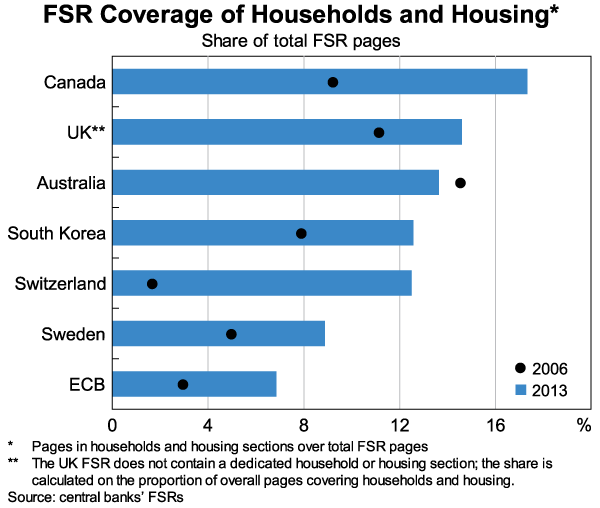
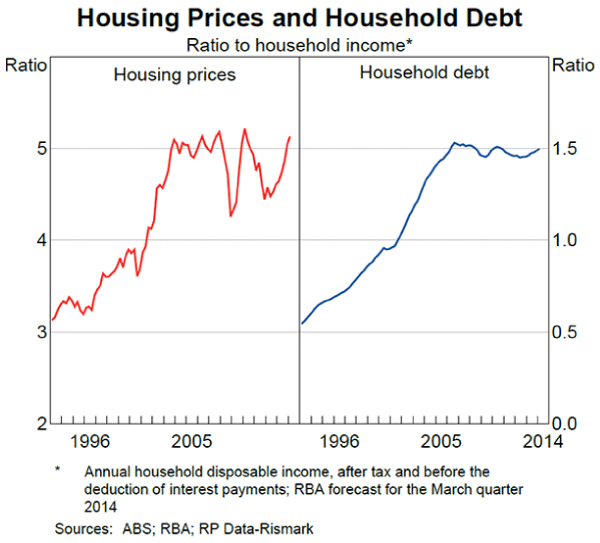

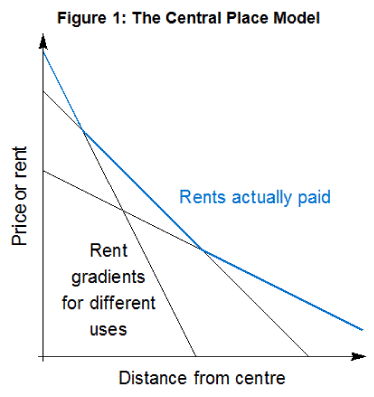

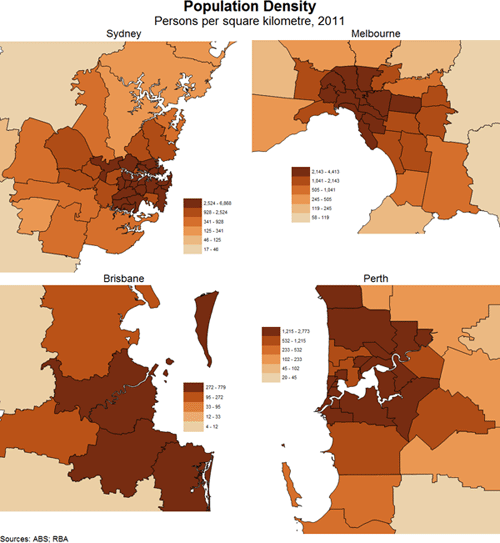
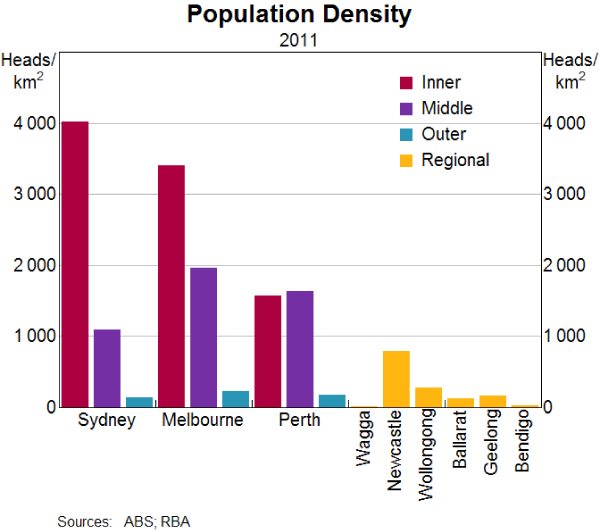
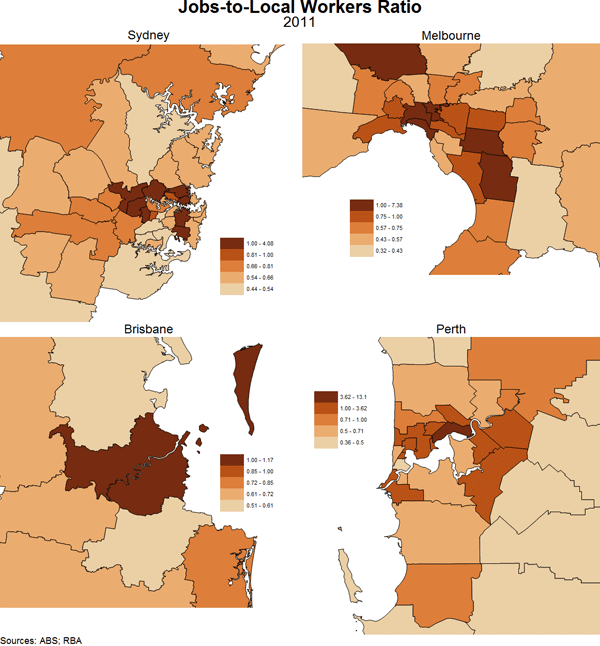
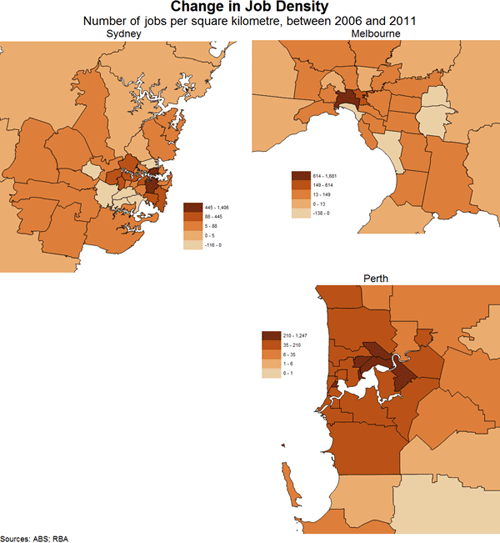





Add a Comment
We encourage you to use comments to engage with other users, share your perspective and ask questions of authors and each other. However, in order to maintain the high level of discourse we’ve all come to value and expect, please keep the following criteria in mind:
Enrich the conversation, don’t trash it.
Stay focused and on track. Only post material that’s relevant to the topic being discussed.
Be respectful. Even negative opinions can be framed positively and diplomatically. Avoid profanity, slander or personal attacks directed at an author or another user. Racism, sexism and other forms of discrimination will not be tolerated.
Perpetrators of spam or abuse will be deleted from the site and prohibited from future registration at Investing.com’s discretion.